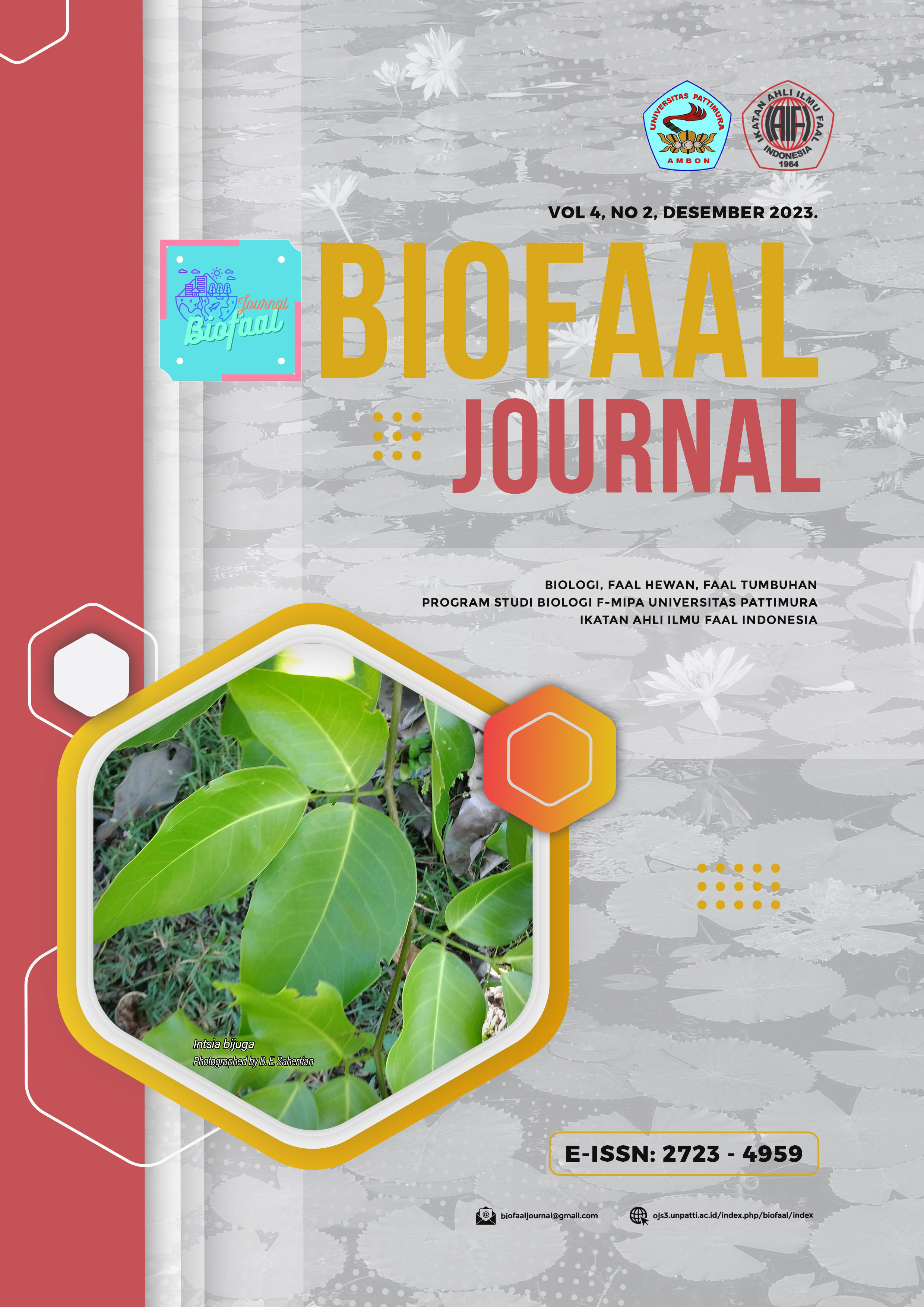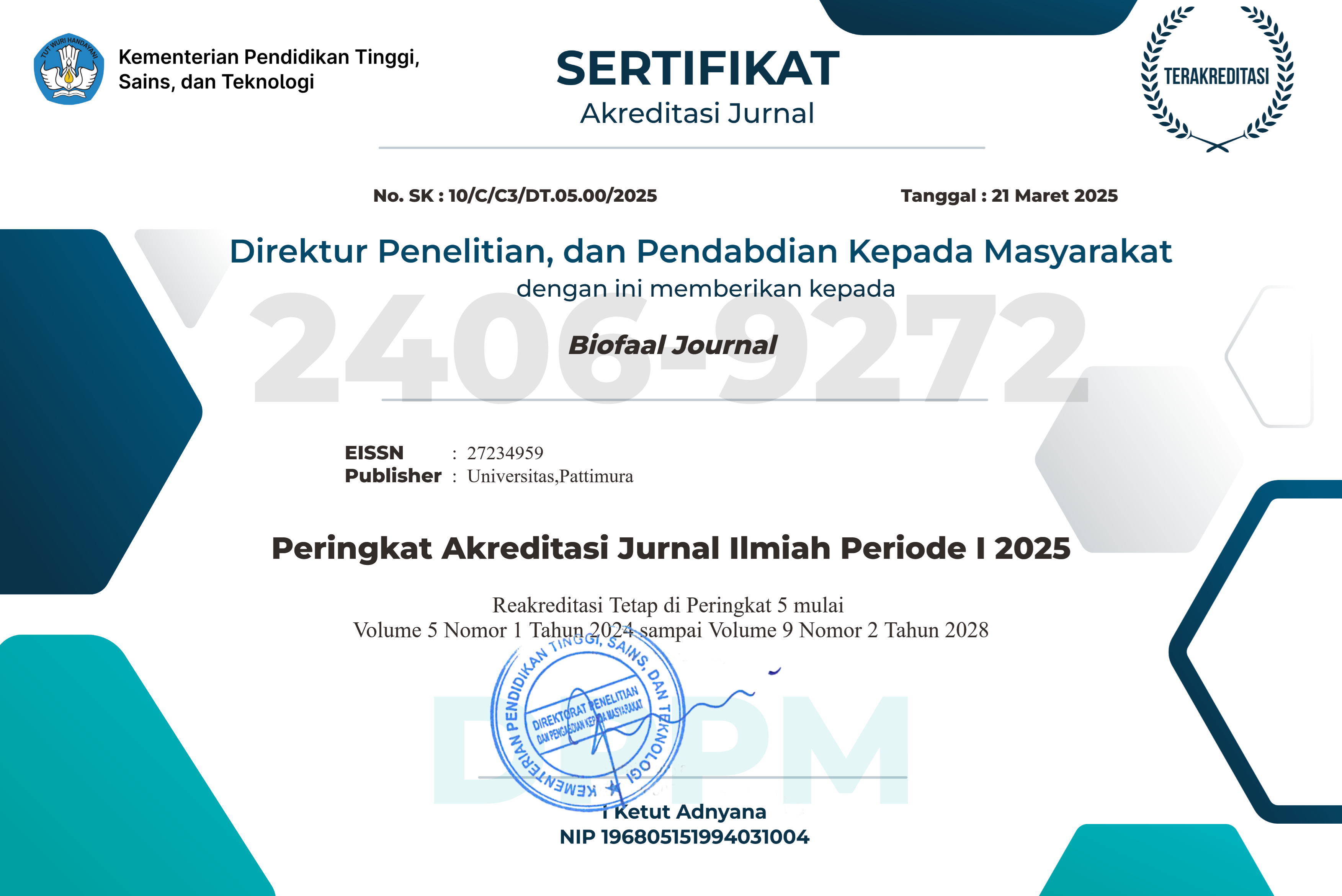EFEKTIFITAS ANTIBAKTERI Vibrio sp. DARI EKSTRAK DAUN MANGROVE Rhizopora apiculata
Abstract
Research was carried out by analyzing the antibacterial ability of the ethanol extract
of mangrove Rhizopora apiculata leaves against Vibrio sp. Maceration using 70%
ethanol resulted in an extract yield of 3.09%. The highest average inhibition zone
results were found in mangrove leaf extract at a concentration of 100% with an
inhibition zone of 24.68 mm. The smallest inhibition zone was found in mangrove leaf
extract with a concentration of 6.25% with an inhibition zone of 3.85 mm, a positive
control inhibition zone (30 mg tetracycline) of 26.35 mm and a negative control
inhibition zone (DMSO 10%) of 0 mm. This can be seen from the results of the
average inhibition zone which shows strong antibacterial activity of mangrove leaf
extract at a concentration of 100% and moderate antibacterial activity of mangrove
leaf extract at a concentration of 75% to 50% and no antibacterial activity at
concentrations of mangrove leaf extract below 25 %, the positive control inhibition
zone (30 mg tetracycline) was 26.35 mm and the negative control inhibition zone
(DMSO 10%) was 0 mm. Phytochemical analysis was also carried out on mangrove
leaves with the results showing the presence of several visible secondary metabolites.
The secondary metabolites found in Rhizopora apiculata mangrove leaves consist of
alkaloids, flavanoids, steroids, saponins and tannins.
Downloads
Copyright (c) 2023 HENDRO HITIJAHUBESSY, Yuni Irmawati

This work is licensed under a Creative Commons Attribution-NonCommercial-ShareAlike 4.0 International License.
1. Author retain copyright and grant the journal right of first publication with the work simultaneously licensed under a creative commons attribution license that allow others to share the work within an acknowledgement of the work’s authorship and initial publication of this journal.
2. Authors are able to enter into separate, additional contractual arrangementfor the non-exclusive distribution of the journal’s published version of the work (e.g. acknowledgement of its initial publication in this journal).
3. Authors are permitted and encouraged to post their work online(e.g. in institutional repositories or on their websites) prior to and during the submission process, as it can lead to productive exchanges, as well as earlier and greater citation of published works.








